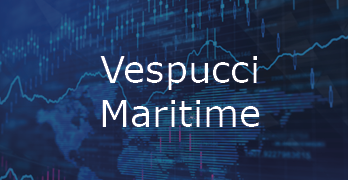FBX Index January: New Year – New Challenges

As we move into 2023, it is clear that container market conditions will be drastically different from 2022.
As we move into 2023, it is clear that container market conditions will be drastically different from 2022. In essence, four fundamental elements are presently set up to shape the new year. Simply put, they comprise of a return to operational normality, an inventory correction, an emergence into a cyclical downturn and IMO2023.
In essence, four fundamental elements are presently set up to shape the new year. Simply put, they comprise of a return to operational normality, an inventory correction, an emergence into a cyclical downturn and IMO2023.
Let us take a closer look at each of these elements, as they will have different impacts.
Operational normality was thoroughly disrupted by the ripples of the pandemic in 2020-2022. At a visual level, the grounding of Ever Given in the Suez Canal exemplified this nicely – but the Suez incident didn’t even provide the most disruption. The more “invisible” queues of vessels outside congested ports, such as 100 vessels outside California, did much more to reduce the available capacity in the market. At its worst, 13.8% of global capacity was removed from the market in January 2022.
But during 2022, these bottlenecks were gradually resolved, and by the end of November 2022, the capacity held back by congestion globally had been reduced to just 5.5%. For comparison, 2% of capacity is usually stuck somewhere, even in a normal market. Operational normality will return at this rate of improvement by the end of Q1 2023. The two main risk factors to this improvement path are a potential strike on the US West Coast as well as the potential impact from an – as yet – unknown impact of a rapidly spreading Covid wave in China.
The baseline assumption should therefore be one of mainly normal operational performance in 2023, and hence access to vessel capacity is also normalized.
The baseline assumption should therefore be one of mainly normal operational performance in 2023, and hence access to vessel capacity is also normalized.
Presently demand is highly subdued due to an ongoing inventory correction by many importers especially in Europe and North America. This has caused demand to drop below pre-pandemic levels. The latest data for cargo loaded in October shows global demand measured in TEU*Miles down by -12.8% year-on-year and down by -7.7% compared to October 2019 before the pandemic.
As such, this is a temporary phenomenon likely to reach its natural endpoint during Q1 2023. Hence the very low degree of vessel utilization, and negative rate pressure from this phenomenon, will only be prevalent at the start of the year.
Whether there will be a surge in demand following then end of the inventory cycle depends on the depth and duration of the current economic downturn. At best, such a surge might happen in peak season 2023, but worse, it might be postponed until early 2024 in the lead-up to the Lunar New Year.
Whether there will be a surge in demand following the end of the inventory cycle depends on the depth and duration of the current economic downturn. At best, such a surge might happen in peak season 2023, but worse, it might be postponed until early 2024 in the lead-up to the Lunar New Year.
The global fleet has an orderbook of roughly 9% in both 2023 and 2024. Even when accounting for an increase in scrapping, this is more than any reasonable estimate of demand growth. This is very common following a strong market and essentially a traditional cyclical development. As such, the emergence from the pandemic-induced boom in 2020-2022 will be into the down-cycle part of a normal market.
Finally, the new environmental rules IMO2023 have taken effect. This is not a “big bang” impacting all vessels right away but will be a gradual effect over 2023 and 2024. It will cause a range of vessels to steam at slower speeds, reducing market capacity.. However, the quantitative impact is quite uncertain, and market estimates range from almost nothing to a 10% capacity reduction. This effect can limit the downcycle in the market, but not eliminate it entirely.
About Lars Jensen, CEO, Vespucci Maritime
Lars is a leading expert and thought leader in analyzing global container shipping markets. Lars has 19 years’ experience hereof the last nine within multiple companies he has founded, with the main focus as CEO of Vespucci Maritime.
Receive monthly container market reports direct to your inbox.